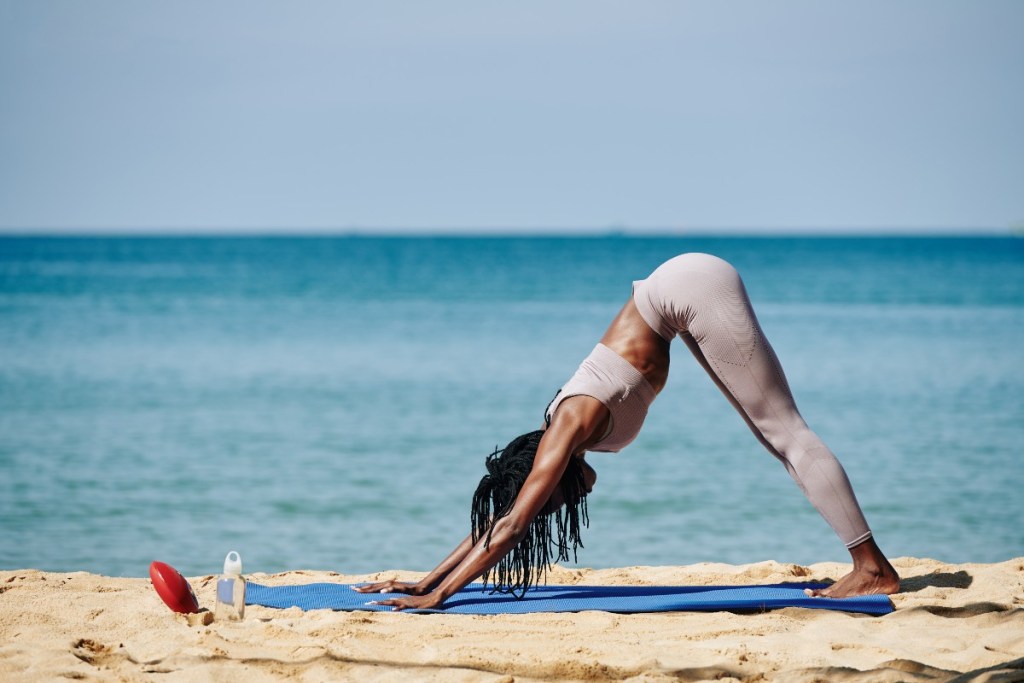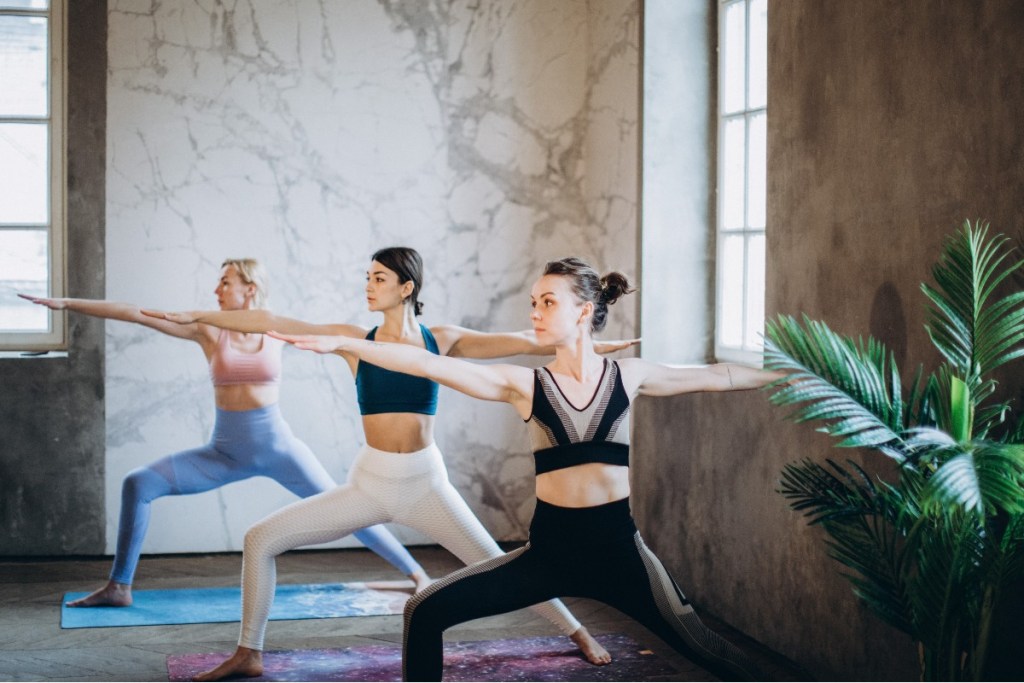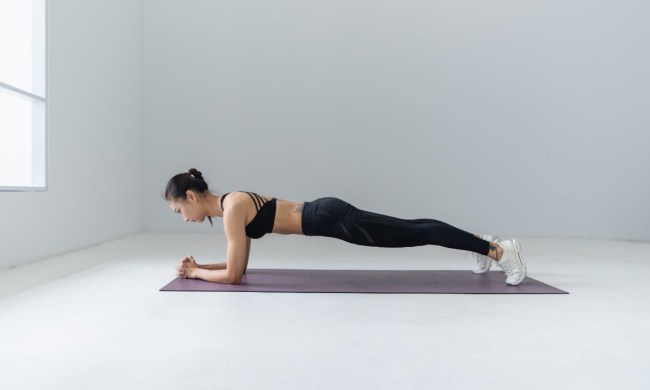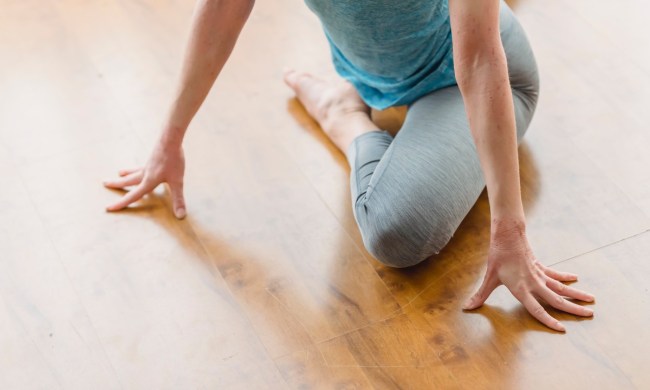Yoga boasts several benefits for your mind and body — and that’s not just marketing speak. On top of building strength, balance, and flexibility, yoga can also reduce stress, anxiety, inflammation, and blood pressure.
This is likely a result of the mind-body connection that yoga fosters. By focusing on your breathing and posture, you occupy your mind and effectively block out many of life’s daily stresses.
Though you may see pictures of yogis in positions that look expert-level, you don’t need any experience to try other, more basic yoga poses. We’re not getting into headstands quite yet, so if you’re just getting started, try these yoga poses for beginners.

Downward-facing dog
Downward-facing dog is a staple pose to add to your yoga repertoire, especially since instructors often start sessions in this basic position.
Benefits: Downward-facing dog stretches the hamstrings, and you can pedal your legs to work in a calf stretch, too. This energizing pose also improves blood circulation.
How to do it: Get into a tabletop position on your hands and knees, keeping your wrists shoulder-width apart. Move your hands about three inches ahead of your shoulders, press them into the mat, and tuck your toes under as you inhale. As you exhale, lift your knees off the floor and straighten your legs, as seen above.
Cobra
Cobra pose is among the easier moves for newcomers. While it looks very similar to the upward-facing dog position, the legs and pelvis stay on the mat.
Benefits: Cobra lengthens and strengthens the spine, decreasing lower-back stiffness. It also stretches your chest and abs, making for a much-needed stretch after an upper-body workout.
How to do it: Start by lying on your stomach with palms flat on the ground directly under your shoulders. Keep your elbows tucked toward your body near the ribs and legs about hip-width apart with toes spread wide. Inhale, then while keeping neck neutral and pubic bone on the floor, lift your chest off the floor as you exhale. Your gaze should stay on the floor, not the ceiling. Roll shoulders back and down and focus on touching your lower ribs to the floor.
Forward bend
If you’re a runner or cyclist, you’ve likely dealt with tight hamstrings. Even circuit and high-intensity interval training (HIIT) can lead to muscle stiffness, so many people use forward bends to tackle post-exercise soreness.
Benefits: Besides stretching your hamstrings, forward bends also improve hip and calf flexibility and reduce neck and back tension.
How to do it: The forward bend isn’t quite as simple as bending down and touching your toes, but it’s close. Stand with your feet next to one another and keep a soft bend in your knees so they aren’t locked. Inhale, hinge from the hips, and keep your back straight as you lower your chest toward the floor. Bring your fingertips in line with the toes and, if you have the flexibility, try to place your hands flat on the floor. Keep your neck relaxed and breathe deeply.

Warrior II
Warrior II is another common yoga pose, open to all skill levels, that will make you look — and feel — fierce and strong.
Benefits: This pose stretches your hips, groins, and shoulders while opening your chest. It can also enhance breathing and stability.
How to do it: Step into a lunge position with your feet approximately four feet apart. Inhale as you raise your arms in line with your shoulders, reaching out on either side of you, parallel to the floor. Turn your back foot about 90 degrees, then pivot your hips so your back thigh is facing outside, in line with your knees. Turn your front foot slightly in the opposite direction, planting it at a 45-degree angle. Bend your right knee so that it is over your right ankle and hold. Exhale, and switch sides after about one minute.
Hardcore yogis may be able to work themselves into a variety of pretzel-like positions, but you don’t need circus-level flexibility to give yoga a try. There are plenty of yoga poses for beginners that will strengthen your mind-body connection, reduce stress, and prevent injury. With practice, you’ll be able to work your way up to more difficult positions, but even then, you’ll still find yourself going back to these simple, relaxing, core poses.
BlissMark provides information regarding health, wellness, and beauty. The information within this article is not intended to be medical advice. Before starting any diet or exercise routine, consult your physician. If you don’t have a primary care physician, the United States Health & Human Services department has a free online tool that can help you locate a clinic in your area. We are not medical professionals, have not verified or vetted any programs, and in no way intend our content to be anything more than informative and inspiring.



